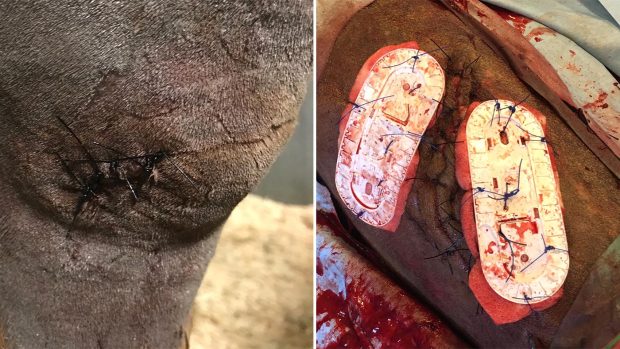Horses tend to be accident prone, so it’s not uncommon as an owner to find yourself dealing with an injury of one kind or another.
Just as human first-aid techniques have progressed, however, things have changed in the veterinary world. Gone are the days of blasting every wound with powder or purple spray.
The latest products and management methods can speed up initial healing and encourage a more complete long-term recovery.
According to Kirsty Lesniak, a senior lecturer at Hartpury College who teaches equine science, appropriate and effective wound care means getting things right from the start.
Wound types
Incised: a cut with clean, straight edges which may bleed frequently but generally heals quite quickly.
Laceration or tear: the edges are torn and irregular in shape and there are often skin flaps with a limited blood flow.
Abrasion: a superficial wound such as a graze which does not fully penetrate
the skin.
Puncture: can be much more serious than it first appears, with a variable depth of soft tissue penetration but a small skin opening. Foreign material can be carried deep inside and trapped in the wound.
Penetration: where an object penetrates a body cavity with risk to the internal organs.
De-gloving: where skin has been stripped from the limb or torso.
DON’T FORGET: every equine should be vaccinated against tetanus — infection can invade the body through any wound and even tiny scratches pose a risk.
To read the full veterinary article about wound management see the current issue of H&H (18 April 2013)



